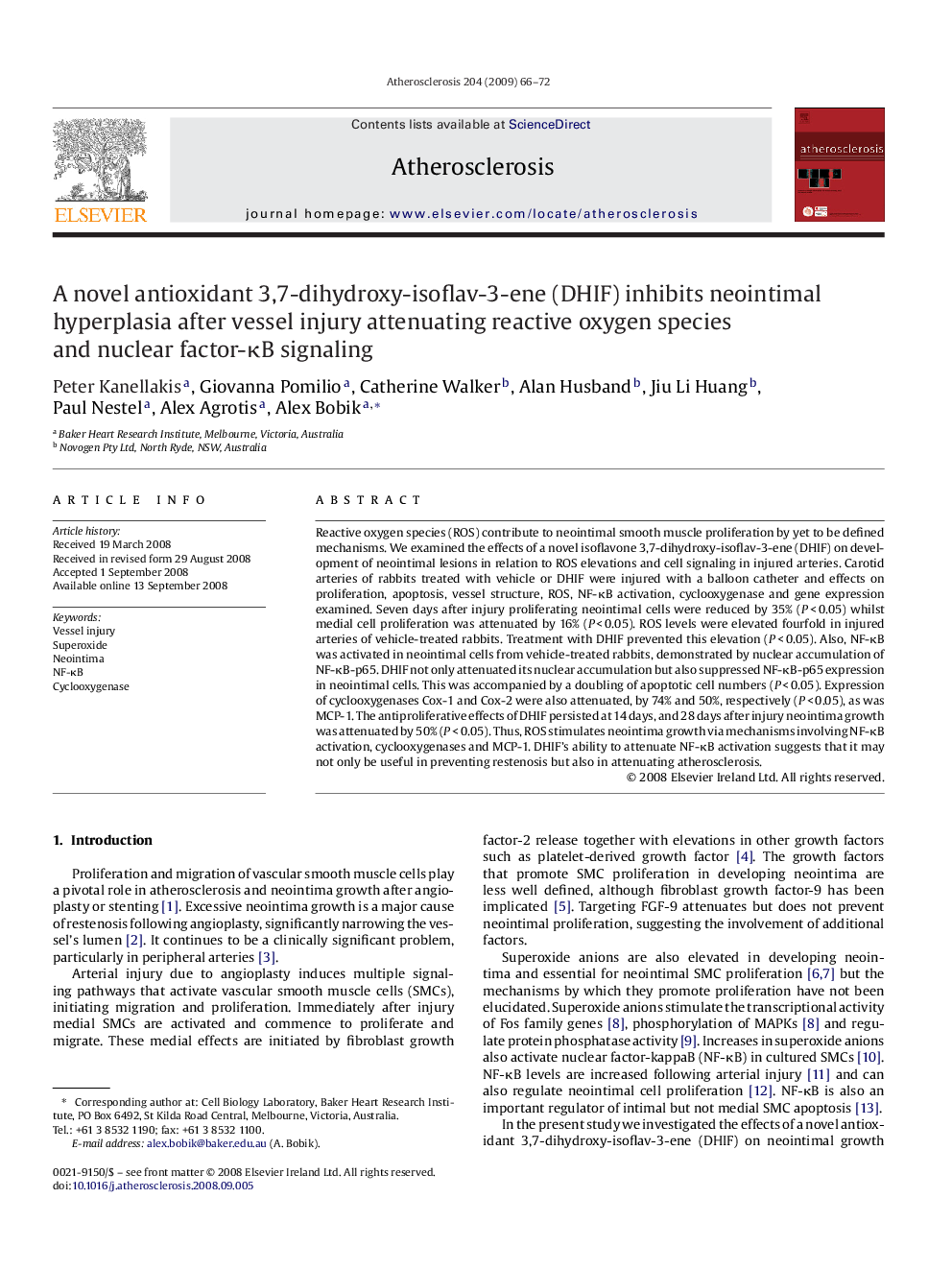| کد مقاله | کد نشریه | سال انتشار | مقاله انگلیسی | نسخه تمام متن |
|---|---|---|---|---|
| 2893603 | 1172417 | 2009 | 7 صفحه PDF | دانلود رایگان |

Reactive oxygen species (ROS) contribute to neointimal smooth muscle proliferation by yet to be defined mechanisms. We examined the effects of a novel isoflavone 3,7-dihydroxy-isoflav-3-ene (DHIF) on development of neointimal lesions in relation to ROS elevations and cell signaling in injured arteries. Carotid arteries of rabbits treated with vehicle or DHIF were injured with a balloon catheter and effects on proliferation, apoptosis, vessel structure, ROS, NF-κB activation, cyclooxygenase and gene expression examined. Seven days after injury proliferating neointimal cells were reduced by 35% (P < 0.05) whilst medial cell proliferation was attenuated by 16% (P < 0.05). ROS levels were elevated fourfold in injured arteries of vehicle-treated rabbits. Treatment with DHIF prevented this elevation (P < 0.05). Also, NF-κB was activated in neointimal cells from vehicle-treated rabbits, demonstrated by nuclear accumulation of NF-κB-p65. DHIF not only attenuated its nuclear accumulation but also suppressed NF-κB-p65 expression in neointimal cells. This was accompanied by a doubling of apoptotic cell numbers (P < 0.05). Expression of cyclooxygenases Cox-1 and Cox-2 were also attenuated, by 74% and 50%, respectively (P < 0.05), as was MCP-1. The antiproliferative effects of DHIF persisted at 14 days, and 28 days after injury neointima growth was attenuated by 50% (P < 0.05). Thus, ROS stimulates neointima growth via mechanisms involving NF-κB activation, cyclooxygenases and MCP-1. DHIF’s ability to attenuate NF-κB activation suggests that it may not only be useful in preventing restenosis but also in attenuating atherosclerosis.
Journal: Atherosclerosis - Volume 204, Issue 1, May 2009, Pages 66–72